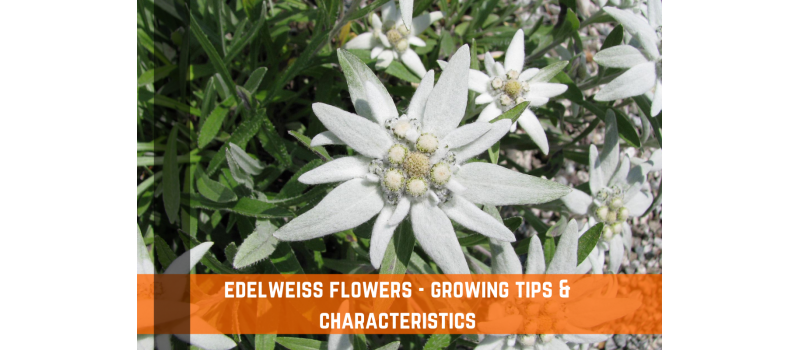Edelweiss Flowers, also known as Leontopodium alpinum, are well-known for having woolly, lance shaped leaves and white flowers shaped like stars. These delicate flowers are native to the high altitudes of the Alps, where they thrive despite the harsh conditions of rocky soil, low temperatures, and strong winds. Edelweiss is a slow-growing plant that does not start producing flowers until after it has been grown for two years.
Edelweiss Flowers are low maintenance. These delicate flowers are adapted to survive in harsh conditions, as they do best in areas with low temperatures and a lack of nutrients in the soil. They are wonderful additions to gardens and should not be missed. They are not susceptible to many different diseases or pests and can withstand browsing by deer.
The leaves and blooms of these mountain flowers, which have white bracts surrounding clumped yellow florets, are covered in woolly hairs that protect the foliage from the elements. Edelweiss flowers also have white bracts surrounding their blooms. These flowers can reach a height of anywhere from eight to sixteen inches, depending on the environment they are grown in, and they bloom anywhere from late spring to early fall.
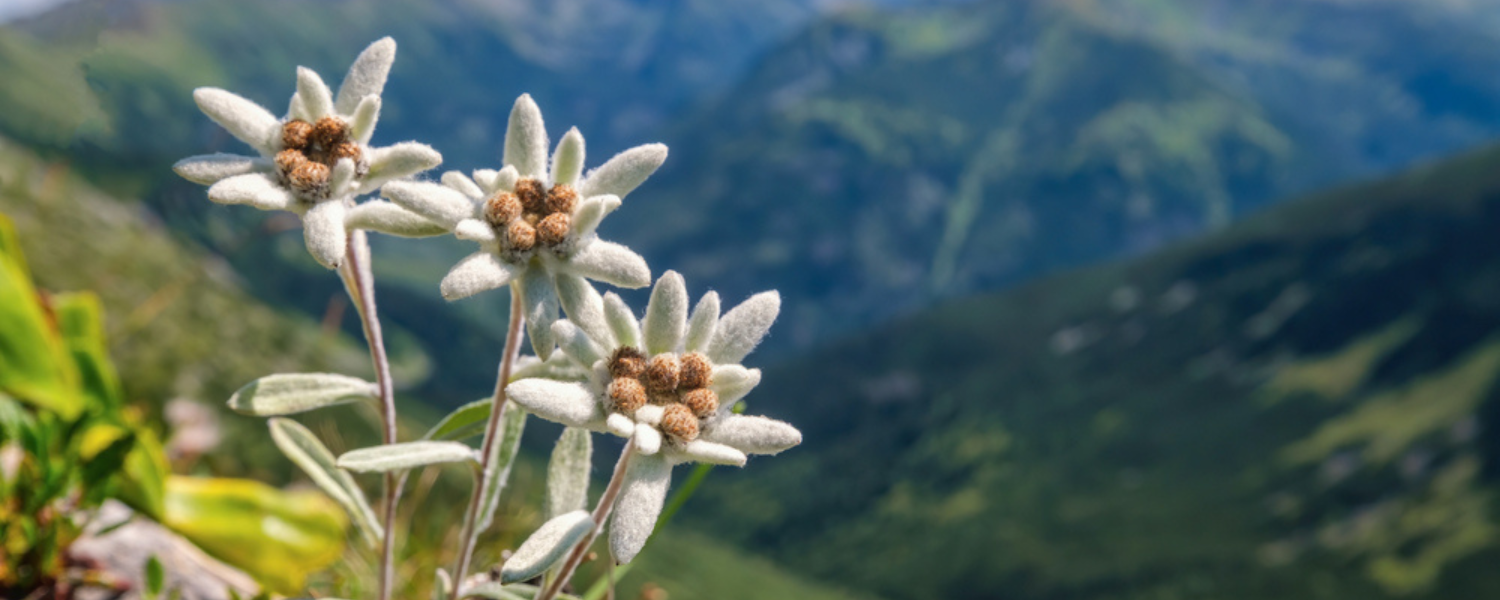
Edelweiss Flower Optimal Growing Conditions
Light
When exposed to direct sunlight, these Edelweiss flowers thrive. They can be grown underneath taller plants to provide some measure of protection from the elements and to benefit from dappled sunlight. This will allow them to grow in conditions that are comparable to the natural conditions in which they grow naturally.
Soil
The key to maintaining the health of Edelweiss flowers is to use soil that drains well, and these plants thrive in the typical soil used for rock gardens. These plants thrive in environments with a pH range that is close to neutral, between 6.5 and 7.5. When it comes to the soil's composition, the ideal combination for cultivating edelweiss flowers is one that consists of compost, sand, grit, and peat moss.
Water
After they have become established, Edelweiss flowers do not require additional water. Dry, arid environments are the natural habitat of the Edelweiss flowers. They cannot survive in soil that is too wet, and they do much better when the soil is watered insufficiently rather than excessively. During the first year of development, you should water the plant whenever the soil becomes dry to the touch.
Temperature & Humidity
Edelweiss flowers are adapted to thrive in the severe conditions of high altitudes, including the low temperatures, high winds, and harsh climate. The woolly leaves of the plant serve to shield it from the wind and the rain. These flowers can only thrive in cool temperatures and can only be cultivated in USDA hardiness zones 4 through 7. They do not thrive in climates that are hot and humid.
Fertilizer & Nutrition
Edelweiss is a plant that thrives in the rocky, nutrient-deficient soils of high altitudes. As a result, the plant rarely needs fertilizer and often will grow better without it.
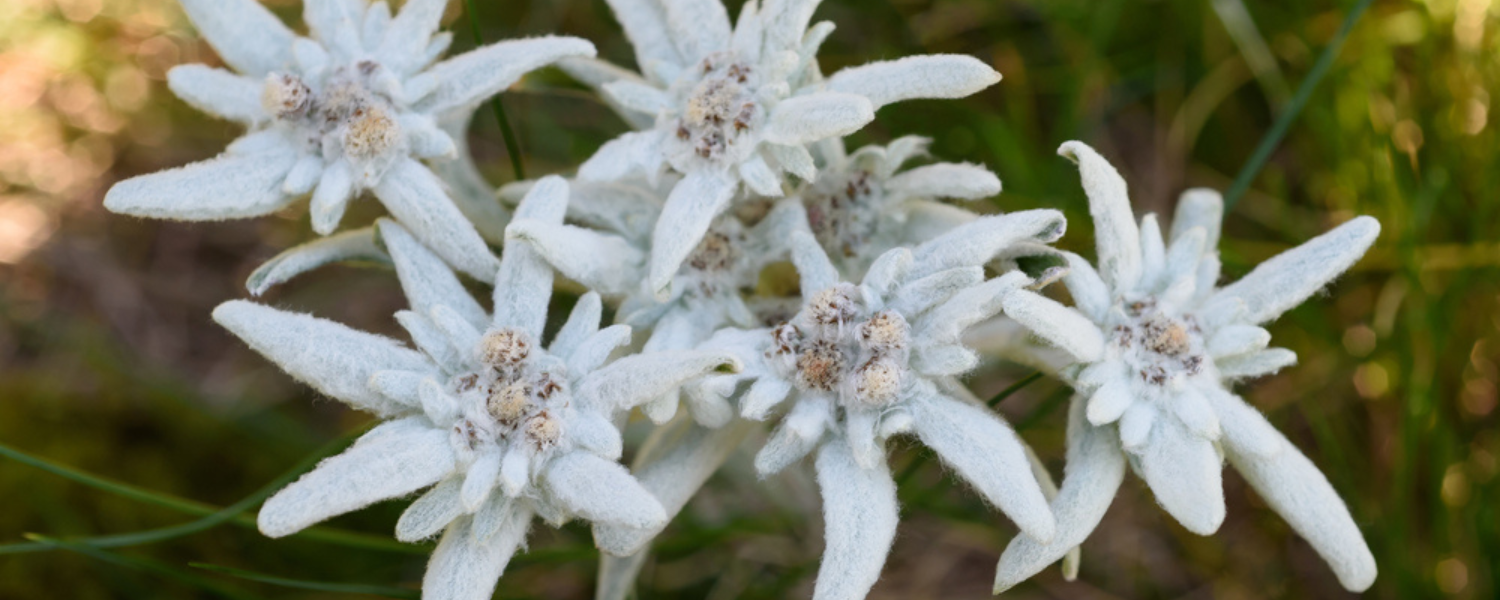
Propagating Edelweiss Flowers
Division is one method for carrying out the process of propagation. It is best to perform this task once every few years. The division of edelweiss will ensure its continued expansion in the years to come. To successfully divide edelweiss, you will require a small shovel, a pair of garden snips that are very sharp, and gloves.
Dig around the edelweiss plant carefully in the spring to break up and loosen its root system. Remove the plant from the ground. To separate the plant into multiple pieces, cut through the root system using the shovel and the snips. Check to see that all of the divisions have healthy roots and healthy foliage. Finally, plant each division in a spot that gets plenty of sunlight and has soil that drains well.
How To Plant Edelweiss Flowers From Seed
Edelweiss flowers are a hardy perennial that can be difficult to cultivate unless the appropriate conditions are accounted for. The following is a brief summary of the steps involved in cultivating edelweiss flowers:
Stratify The Seeds
If you stratify these seeds before planting them, there is a better chance that they will germinate. To accomplish this, place your seeds inside of a plastic bag that has been previously filled with soil. Put the bag in the refrigerator for at least three weeks before you intend to plant the seeds.
Select A Planting Location
Edelweiss flowers thrive in full sun but can also be grown in partial shade. Choose a spot in your yard or garden that gets either full sun or a mix of sun and partial shade.
Prep The Soil
Edelweiss flowers prefers a soil that is rocky, gritty, and has good drainage. They do particularly well in rock gardens or in soil to which pebbles, lime, and sand have been added. The ideal range for your soil's pH is between 6.5 and 7.5.
Plant The Seeds
You can plant edelweiss seeds in the ground outside by simply scattering them over the surface of the soil. The seeds should be misted as this is the most effective method of watering them. It is best to avoid using the spray that comes from a garden hose because it has the potential to wash away the seeds.
Water The Seeds
During the germination process, which can take up to six weeks, maintain a moist environment for both the soil and the seeds. After that, you'll be able to transfer them to a location that receives more sunlight.
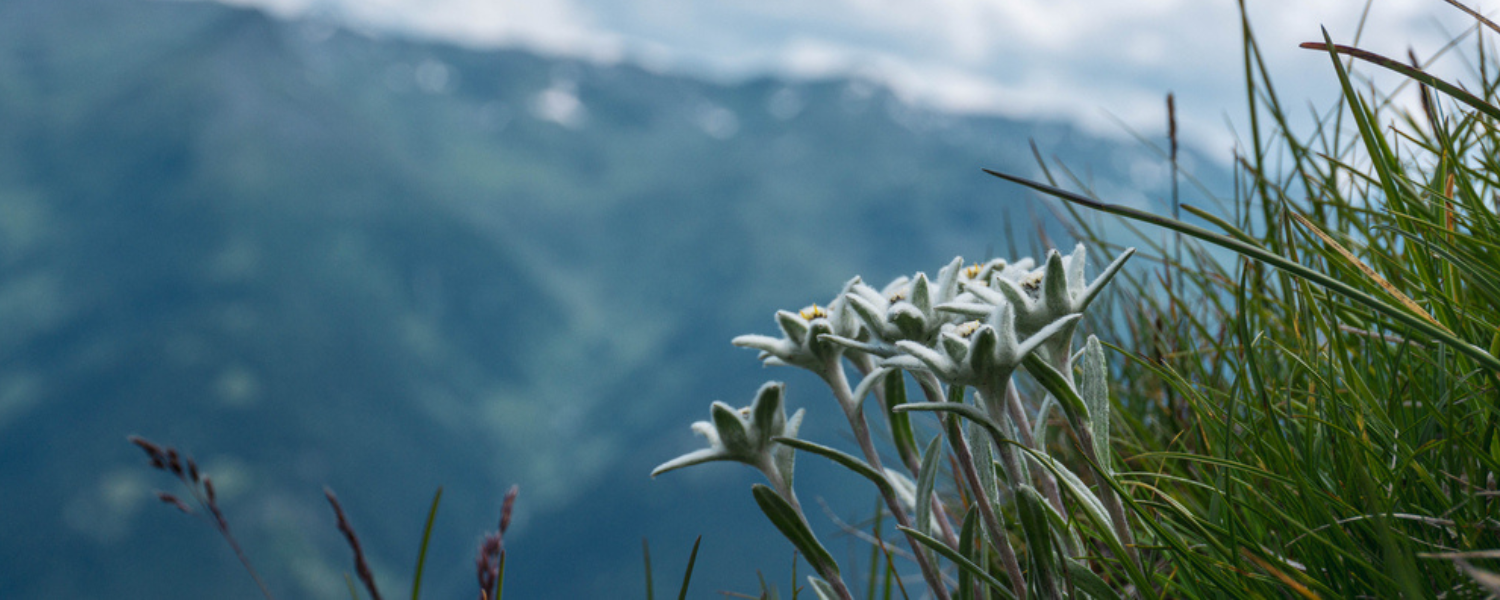
Edelweiss Flower Care & Maintenance
Mulch
Edelweiss grows best in climates that regularly receive snowfall; however, if you live in an area that does not experience snowfall, applying a layer of mulch in the fall can help simulate the conditions necessary for healthy growth of the plant. You should leave the mulch on the plant's root system throughout the winter and then take it off in the spring.
Watering Schedule
Edelweiss flowers can thrive with a relatively low amount of water. When exposed to conditions with a high level of moisture, the plant is also at an increased risk of developing root rot. Your plant will need to be watered about once every week during its first year of growth, but after that it will not require consistent watering. Take care not to overwater your plants and maintain a soil that maintains its porosity at all times.
Pruning
This alpine flower does not require any pruning, but if the flowers are allowed to remain intact, the plant will produce its own seeds. If you want to keep more control over the growth of your flowers and keep the plant from spreading, remove the white flower heads before they go to seed. This will help keep your flowers from becoming invasive.
Potting & Repotting Edelweiss Flowers
These hardy plants do very well when grown in containers as long as they are provided with an abundance of light and soil that drains very well. The container needs to have holes in the bottom for drainage so that water can escape easily. It is not necessary to repot edelweiss very frequently because the plant does not become very large and grows very slowly.
When the edelweiss plant has outgrown its container, gently work on separating its roots from the container so that they can be removed. The plant should be repotted into a container that is slightly larger, and the roots should be covered with soil that has good drainage. Keep any pets or dogs away from newly potted edelweiss flowers.
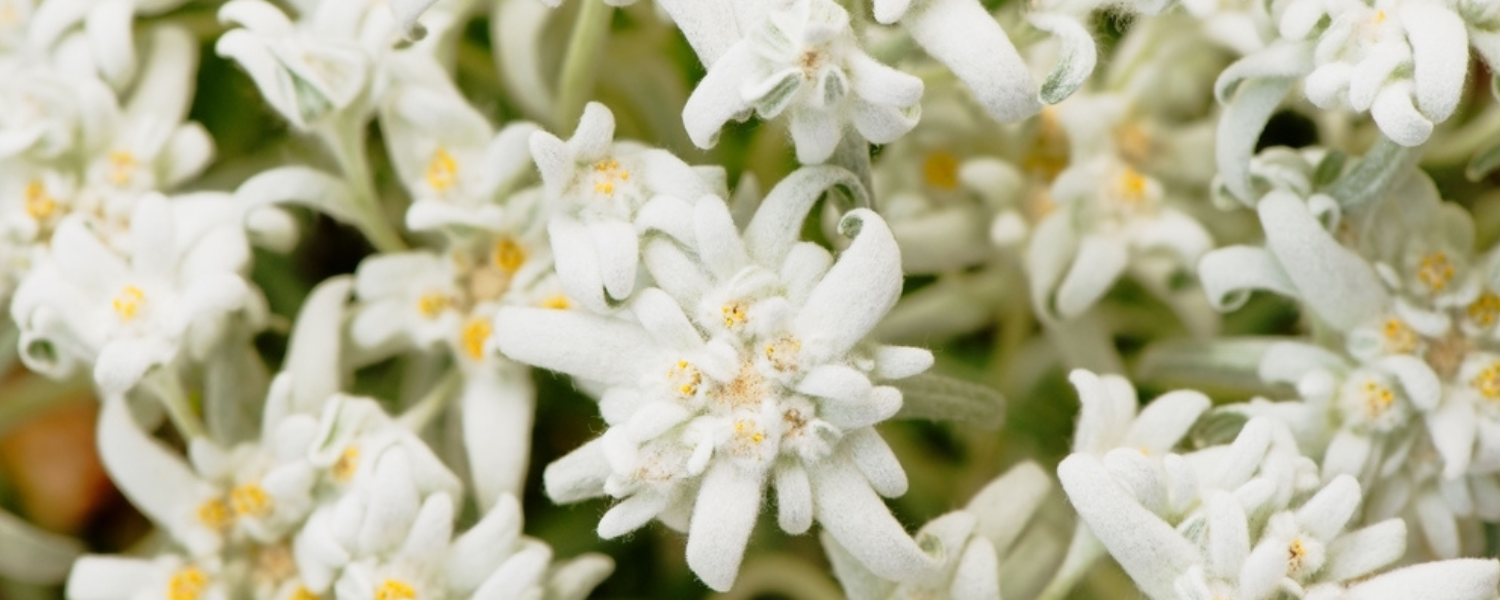
Common Edelweiss Flower Pests & Diseases
Edelweiss flowers are exceptionally hardy, despite the fact that they have a reputation for being notoriously difficult to cultivate. They are, however, susceptible to the attack of particular parasites and diseases. Aphids are one of the most common kinds of pests that attack Edelweiss flowers.
These tiny insects are responsible for the yellowing and eventual falling off of the leaves because they feed on the sap of the plants. Edelweiss flowers are also susceptible to powdery mildew, a fungal disease that results in a powdery white coating forming on the leaves and stems of the plant. This disease is caused by a fungus.
Powdery mildew can cause the Edelweiss plant to become weaker and the flowers to fall off earlier than normal if it is allowed to spread unchecked. Edelweiss flowers are susceptible to a variety of diseases and pests; fortunately, these problems can be managed in a number of different ways.
One of the most effective ways to prevent issues from spiraling out of control is to conduct routine checks on the plants to look for any signs of disease or insect infestation. In the event that you do discover insects or diseases on your Edelweiss flowers, there are a variety of treatments that are highly effective. If you take proper care of them, you will be able to admire these lovely flowers for many years to come.
Conclusion
Edelweiss flowers are alpine flowers that are typically very small and white in color. The Edelweiss flower belongs to the Asteraceae family, which also includes daisies and sunflowers among its other members. Edelweiss flowers have a short period of time to bloom, and they only do so for a few weeks during the summer.
Because the Edelweiss plant is a perennial, it will continue to thrive even after many years have passed. Edelweiss flowers have a lifespan of up to fifty years but have a very slow growth rate. Edelweiss flowers are frequently used to symbolize Switzerland, and they are also the national flower of Austria. Follow our trips for growing Edelweiss flowers and you will be on the way to having your own beautiful garden of flowers in no time!

